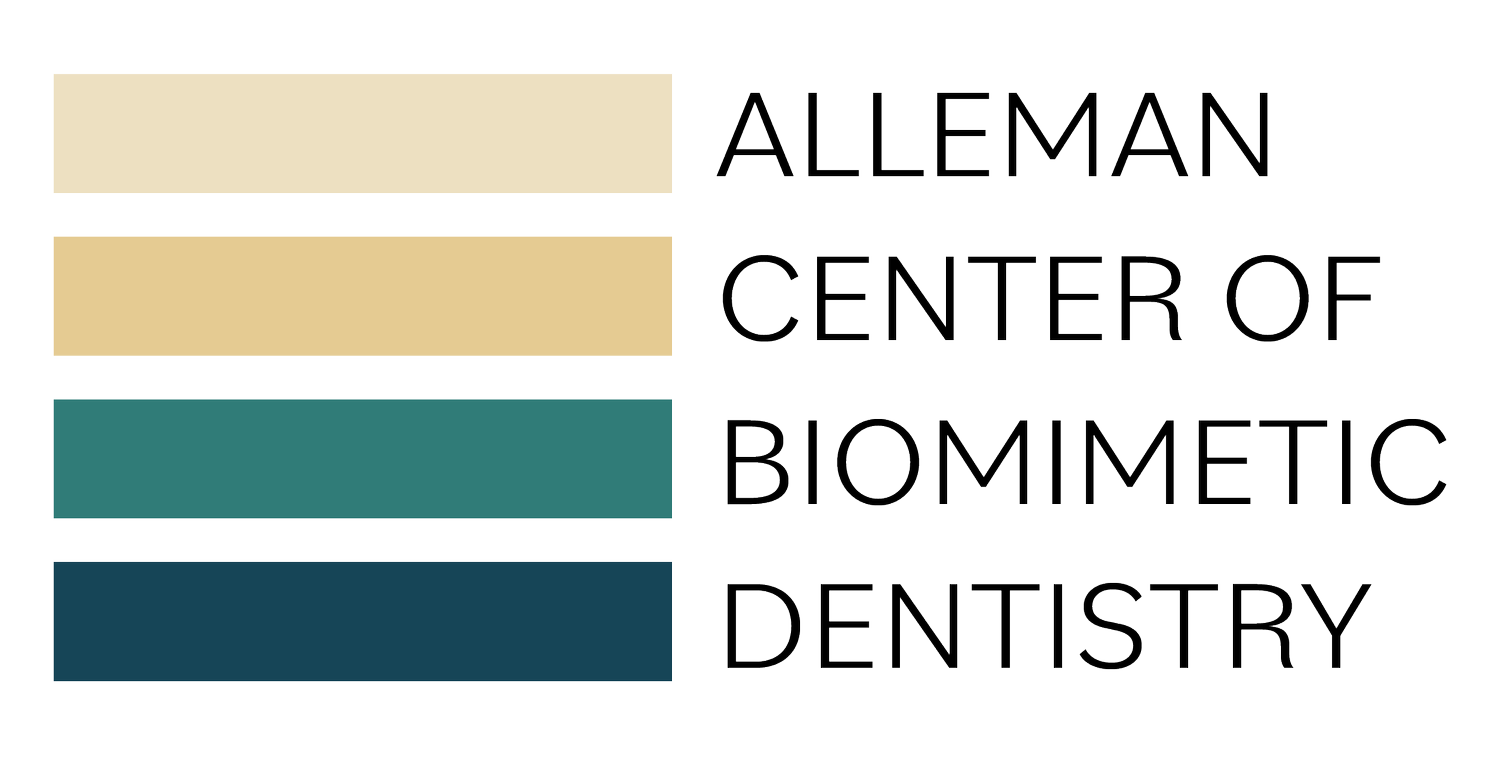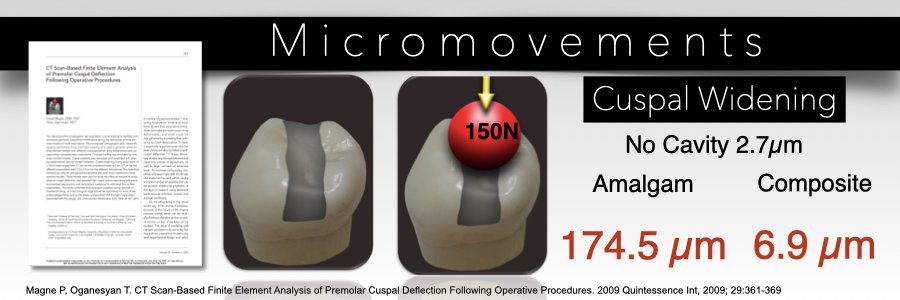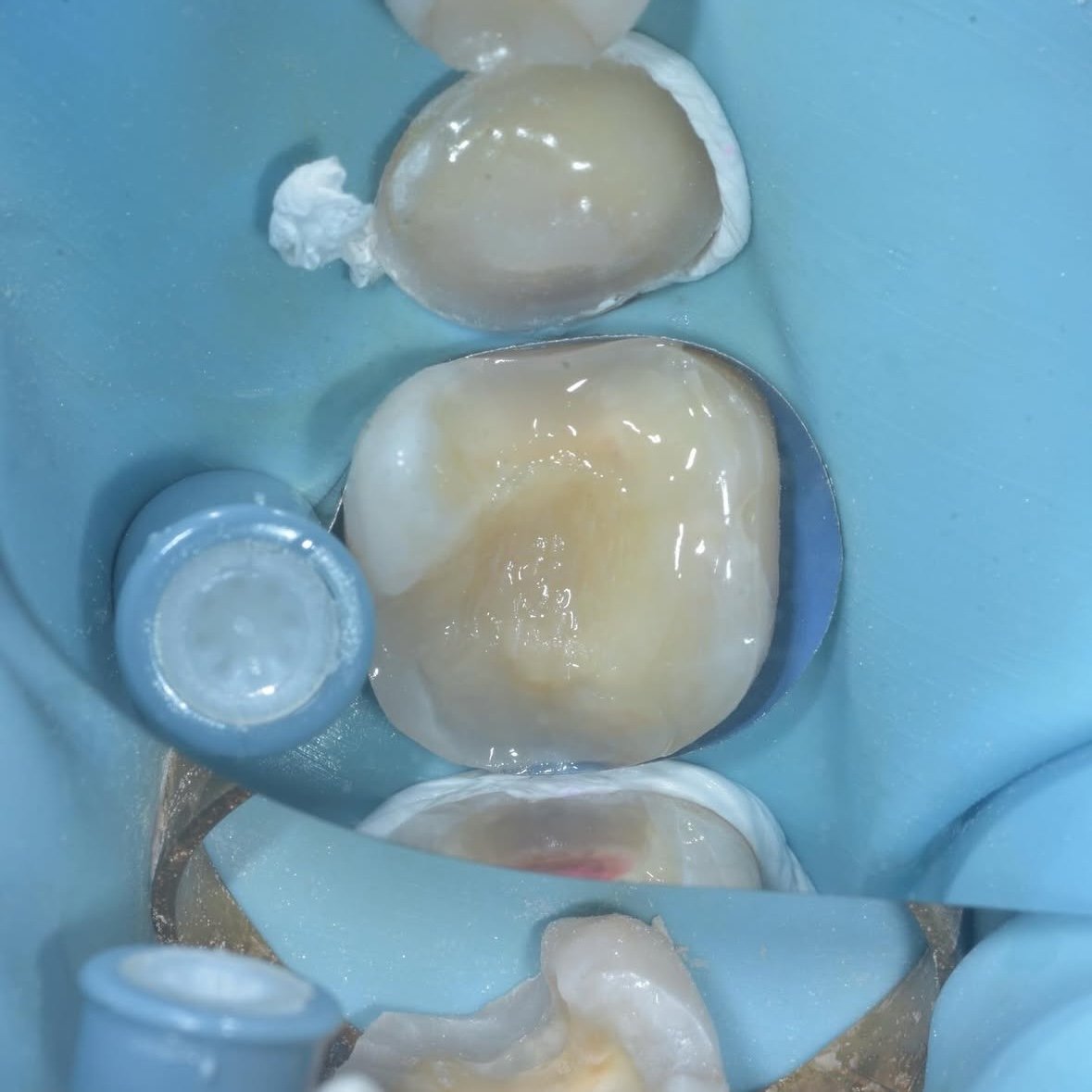Tooth Flexure, Crack Initiation and Abfraction Lesions
Teeth are designed to bend and flex. This resilience, thanks to the pairing of dentin and enamel, allows teeth to chew for decades with minimal wear. While this tooth flexure that the tooth was designed for is normal, flexure beyond the normal limits, whether from an unbonded restoration or non-ideal occlusion, can damage the tooth. Both of these concerns can be treated by mimicking a tooth’s natural form and function using biomimetic restorative dentistry.
Tooth flexure: how teeth withstand the forces of occlusion
A natural tooth bends and flexes 2.7µm with every chew (Magne P, Oganesyan T. CT Scan-Based Finite Element Analysis of Premolar Cuspal Deflection Following Operative Procedures. 2009 Quintessence Int, 2009; 29:361-369). This increases to 174.5 µm in the case of an amalgam restoration or unbonded composite restoration. If composite stays bonded, this flexure is 6.9µm, much closer to the natural range.
This slide from the Biomimetic Mastership outlines the varying micromovements in natural and restored teeth.
Engineering for dentists: crack initiation
When any material bends or flexes more than it is designed to do, this strain will eventually pull the molecules apart, causing a crack to form. This is called crack initiation. Cracks into enamel are a natural stress relief for teeth to protect the dentin, but when cracks propagate beyond the dentin-enamel junction, the tooth is at risk of infection and catastrophic failure.
This case by Dr. Davey Alleman, DMD shows how poorly bonded composite allowed increased tooth flexure, causing a crack to form under the restoration.
Mimicking natural tooth flexure in restored teeth
To mimic a tooth’s natural flexure requires high bond strengths that stay bonded. This is possible with biomimetic restorative dentistry. While composite restorations may start with a decent bond, these have been shown to fail over time if not paired with stress-reduction techniques (Van MeerBeek B, et al. Relationship between bond-strength tests and clinical outcomes. Dent Mater. 2010; 10:e100-e121).
Biomimetic dentistry protocols, as outlined in Dr. David Alleman’s Six Lessons Approach to Biomimetic Restorative Dentistry, increase bond strengths and decrease stress to the hybrid layer, creating bonds that have been shown to stay intact for over 20 years and counting. This biomimetic bond mimics a tooth’s natural strength so it bends and flexes like it is designed to do, preventing crack initiation even in heavily restored teeth.
Techniques from the Six Lessons Approach that reduce bond stress and increase bond strength include immediate dentin sealing, resin coating and use of Ribbond fiber like in this case by Dr. Davey Alleman, DMD.
Abfraction lesions
While gum loss can be linked to a number of factors, in-vivo research from 1997 (Pintado M, et al. Variation in tooth wear in young adults over a two-year period. J Prosthet Dent. 1997; 77: 313-320) showed a clear link to non-verticalized occlusion. In this study, patients with non-verticalized occlusion had non-carious Class V lesions that continued to increase in size until their occlusion was verticalized. Then the lesions stopped growing. The cause was sliding contacts that torqued the tooth rather than compressing it as teeth are designed to do.
Learn more about how the Six Lessons Approach can treat and prevent abfraction lesions in his Six Lessons Approach Podcast episode.
Mimicking natural occlusion in restored teeth
Tooth flexure during occlusion can fall out of its natural alignment for many reasons, but the treatment can be conservative with a biomimetic approach. Conserve healthy tooth structure and eliminate sliding contacts by reestablishing cuspid guidance. This allows a patient to return to verticalized occlusion, stopping the progress of abfraction lesions.
Biomimetic occlusion as taught in the Biomimetic Mastership can be used for cases you treat every day to predictably mimc natural occlusion and prevent pathologies and discomfort associated with occlusal misalignment.
To learn more about occlusion and crack treatment that mimics a natural tooth, study with Dr. David Alleman at upcoming Alleman Center biomimetic dentistry training programs.






